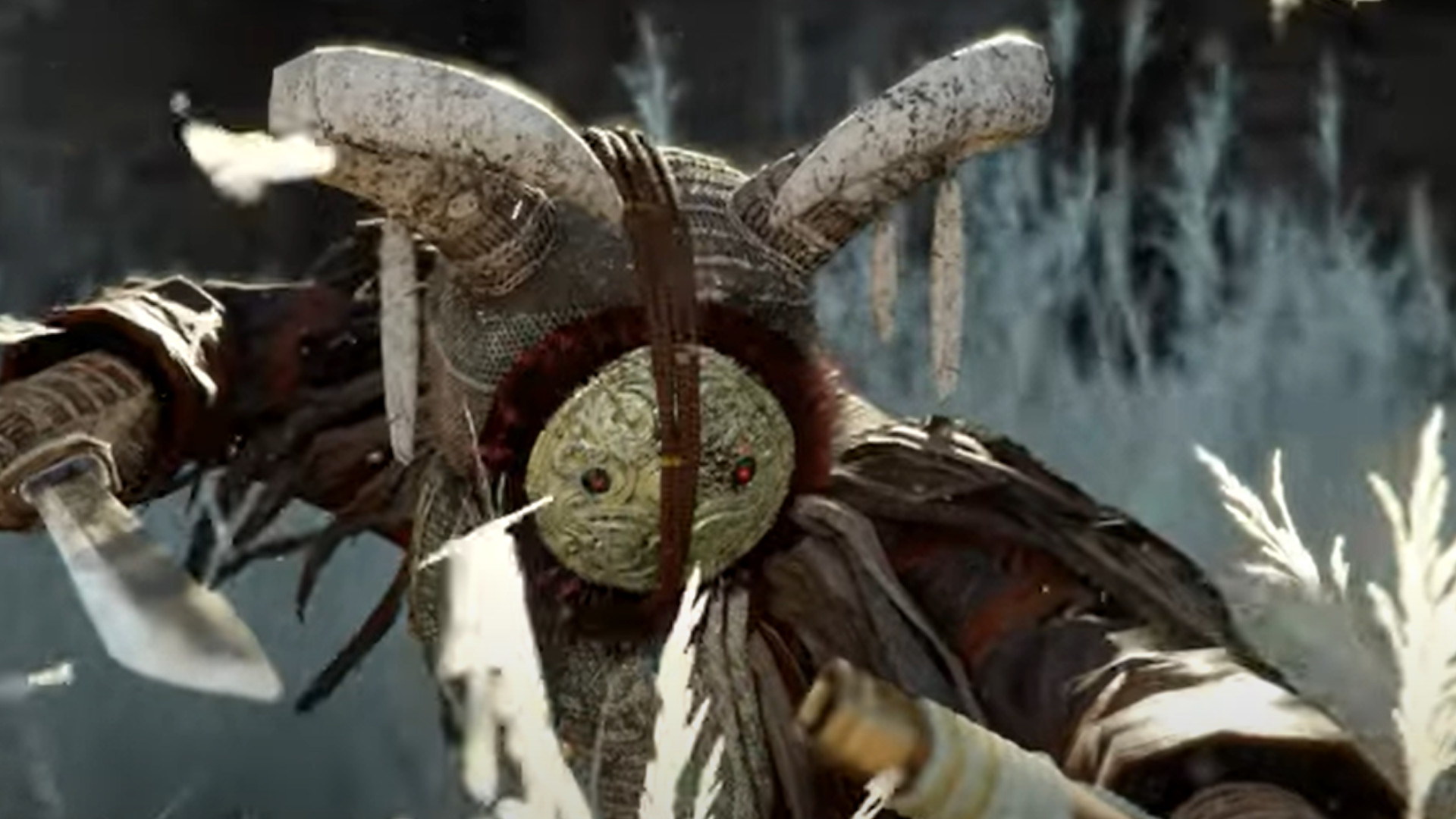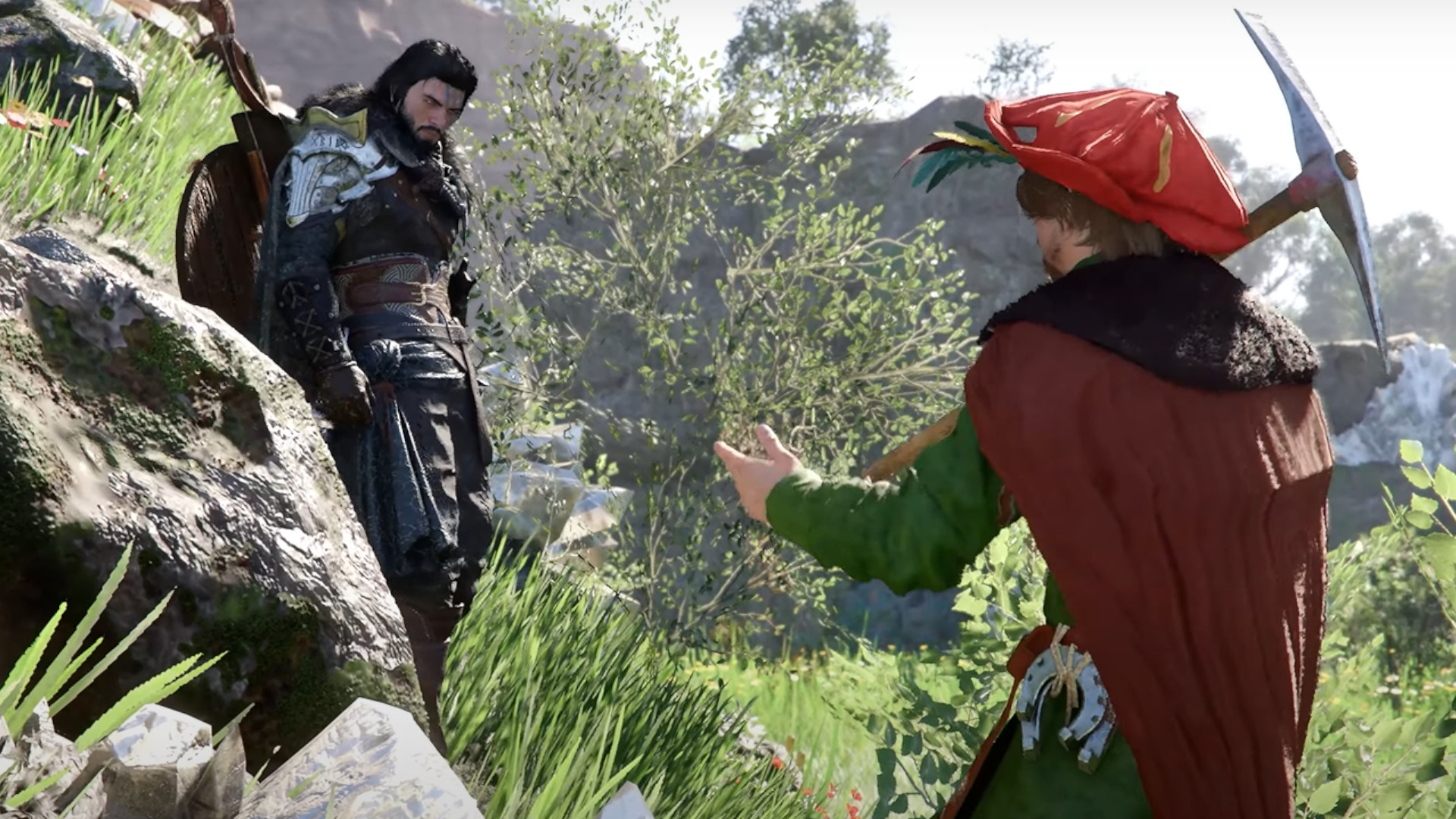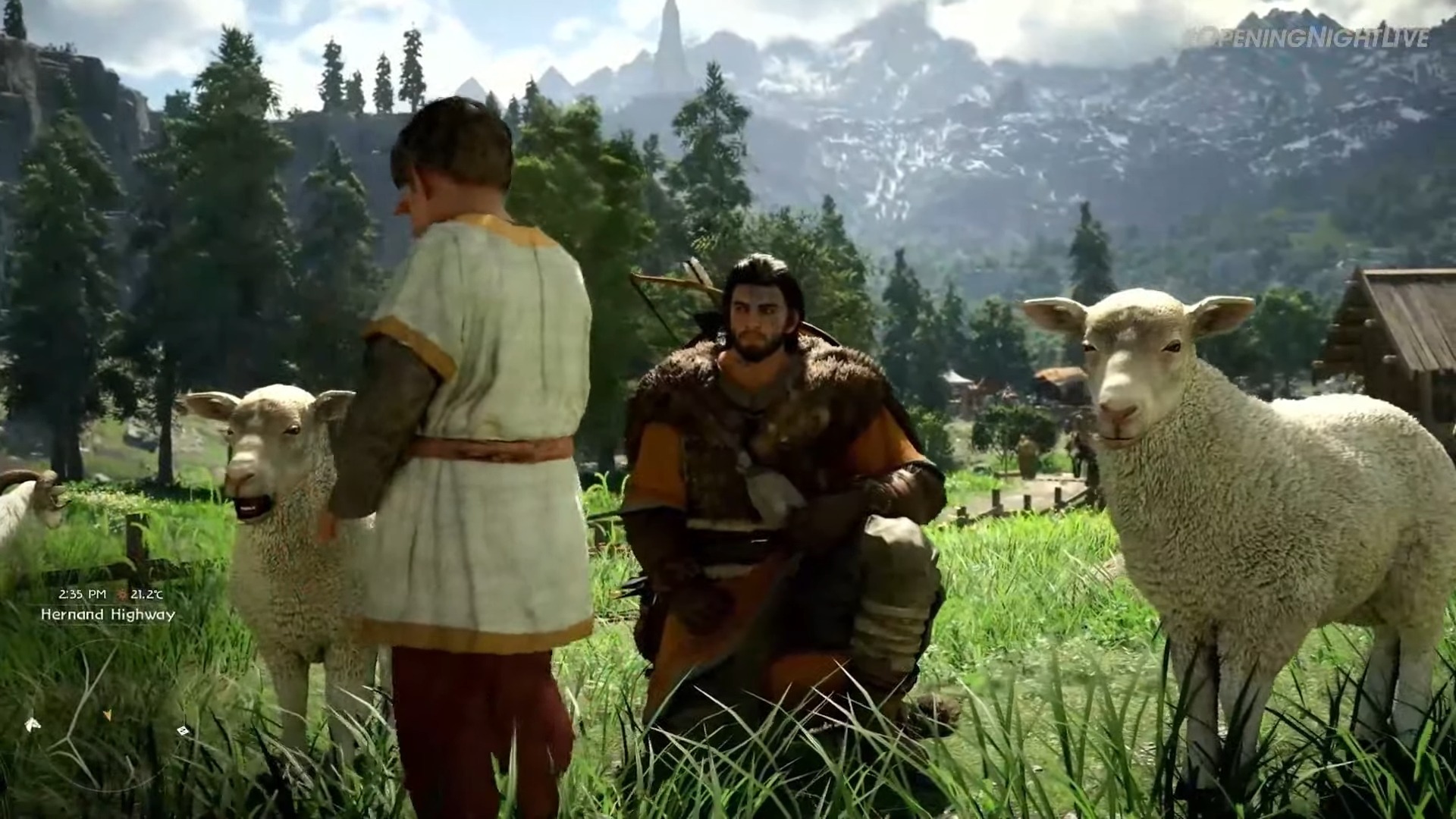
Games go to great lengths to conceal the duct tape, bubblegum, and live crabs holding them together. I know the crabs are in there; you can't hide them from me. So it's always a treat to look behind the curtain and see what's actually going on. Ordinarily I want the smoke and mirrors, but sometimes I also want to see where the smoke is being pumped in from or where the mirrors are suspended. So I leapt at the chance for a nitty-gritty guided demo of the BlackSpace Engine, a new proprietary game engine behind developer Pearl Abyss' latest ambitions, including the upcoming open-world action game Crimson Desert.
A game engine is basically a framework of software and tools used to make games. BlackSpace isn't just the Crimson Desert engine, and future games that use it will likely make considerable tweaks – the same engine can be used to produce radically different games – but Crimson Desert did make for a good showing of what it can do. Crimson Desert was already on my radar because it feels like a single-player evolution of Black Desert, an MMO that I essentially played as a single-player RPG for hundreds of hours, so I walked into this oddball appointment with hungry eyes. I was joined by several Pearl Abyss shepherds and, virtually, by Kwanghyeon Go and Kyungjoon Cho, respectively the heads of the game engine graphic and system divisions, all crowded around a monitor in a neon-seared meeting room.
What I saw was a customized build of BlackSpace, not a final version of Crimson Desert itself. I was not disappointed. BlackSpace is impressive tech. It's capable of gorgeous and reactive sandboxes that seem to build on what the modern Zelda games do so well. (We will be talking about Nintendo's open-world masterwork for years.) More than anything, I wish these kinds of educational and genuinely fascinating details were showcased more regularly, because I would absolutely kill to see the bones of other open-world games like The Legend of Zelda: Breath of the Wild, Red Dead Redemption 2, and the now-delayed GTA 6.
Pop the hood


We've rounded up the best RPGs for you to stay busy with
We started with a Tears of the Kingdom-style freefall from sky islands, the world transitioning seamlessly below. Clever subdivision of levels and assets enables more precise loading on the engine side, I'm told, and more believable presentation for the player. The whole world looks loaded, with no glaring pop-in disruptions even during a dramatic change of scenery, but the engine's only showing you what you need to see. Just enough mirrors and not one more. Coupled with impressive render distance, you get a convincing dive down to the surface.
BlackSpace was built with a few goals in mind. Hyper-realistic interactivity was at the top of the list, and this bleeds into everything from combat to environments. You can throw enemies into walls, spikes, or each other to deal damage. If you set fire to a sturdy wooden gate, it will weaken as it burns, letting you bust through once-immovable surfaces. In-engine toggles brought normally invisible hitboxes and hurtboxes to the foreground, showing how characters and objects collide or what's currently being affected by physics, and highlighting extremely precise interactions. How hard you hit an object can affect how much debris is created. That might be splinters of wood erupting from a struck post, or blades of tall grass gently falling from the point where you cut them.
The Zelda receptor in my brain reacted again when we got to climbing – you might climb trees, cliff faces, or buildings – and it went into overdrive with the introduction of ice arrows. (I realize Zelda didn't invent climbing any more than Persona 5 invented Japan, but the packaging here hit my brain in a similar way.) BlackSpace uses tech called Shallow Water to realistically simulate the flow of water over surfaces, from rivers coursing around rocks to the waves of the sea cascading on shore. When you launch an ice arrow at a river, a chunk of ice will form. It will drift downstream and may eventually collide with a rock and break apart in individual slivers, gently pushed apart by the water's hands.

If you were to dip into the river yourself, you'd find that only specific parts of your body, your clothes, or even your horse, assuming you were mounted, would get wet. Your feet and legs if you waded in, your chest if you fell face-first, and so on. (You might be possessed to ask an absurdly detailed question about this.) GPU-based cloth and hair simulation, which I saw up-close with honest-to-goodness wind vectors visualized as conductors of laundry in the breeze, bring another sprinkling of realism.
Here's one for my fellow fashion fans: the cloth and collision tech looks incredible. Cloaks surround your character but don't clip through the clothing underneath. A shield or bow rests believably on your back without digging into your armor. Your hair, like your horse's tail, whips behind you based on your movement speed. It's a small hangup, and I understand the technical challenges here, but it always irks me just a little when my carefully crafted look ends up clipping and overlapping unnaturally in cutscenes or in motion, and BlackSpace looks like a step forward here. I specifically asked about this, and while "there might be a collision" at some point, the devs say "we want to optimize that as much as possible as well."
I saw clouds moving and billowing in real time, shadows inching around ray traced interiors as the sun crawled along the horizon outside a stained glass window, rain rushing in and then retreating before god's rays, and torches pulsing like handheld suns in the night. NPCs scurried about according to scheduled behaviors; I saw them shield themselves from dynamic rain, crowd the streets during the day, and then pack pubs at night. It's on individual games and systems make full use of all these features, but the foundation is tantalizing. It's easy to imagine a lively world being made here.
Features on features

I was overflowing with questions by the time the demo ended. Loosely cognizant of how difficult it is to build a new game engine, I had to ask why you'd do this in the first place, and how BlackSpace improves on what Black Desert was capable of.
"The Black Desert engine was specific for Black Desert only," the engine heads collectively responded via interpreter. "So there's a lot of features that could not be implemented to any other open-world game or in general other genres of games. We wanted to make a new engine to implement throughout all the new platforms and all the new genres of games so that it could feel realistic and it could be natural, more than the Black Desert engine."
With multiple potential games in mind, the team aimed for a broad engine feature set, fully aware that not every game may push every button or pull every lever they create. Because it's all in-house – and this is one of the major payoffs to the Herculean task of making your own engine – the game and engine teams can coordinate on ideating and implementing new features to support specific ideas.

I asked how you wrangle all these features while minimizing impact on performance and accounting for a range of platforms, and multiple devs actually sighed or put their head in their hands. Short answer? Aim high, but "we need to optimize the game as much as possible so that all the features can apply smoothly on low-spec devices as well."
I imagine this balancing act is even more painful when you're optimizing a subtle feature that many people may not pick up on. But with those additions, it's a mix of things the devs want to add as creators, things players will likely notice, and elements that will go unnoticed if they're doing their job right. I look forward to eyeballing them for myself out in the wild.
"All these subtle features, it's kind of both, because our developers also wanted these kinds of features to be implemented," the engine devs said. "But even though the players would not notice these kinds of little features, if these features don't exist, they'll notice right away this difference between implemented features and the gameplay where these features are not implemented. So it's kind of both. So we, even though players don't notice, we see that this will also make it more realistic and more natural."







